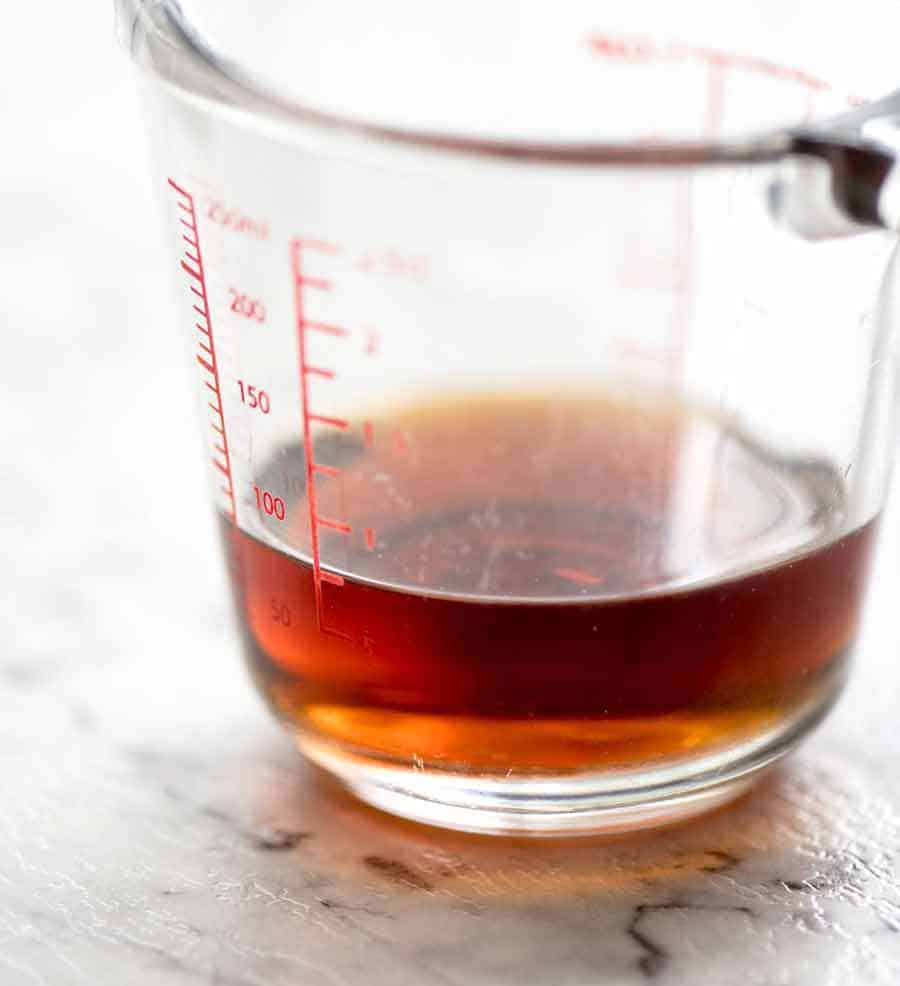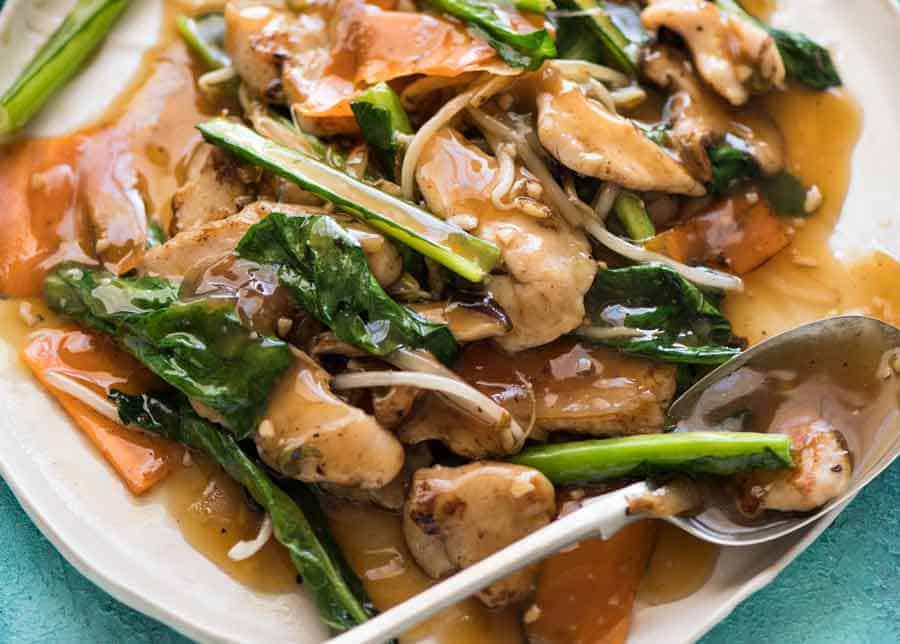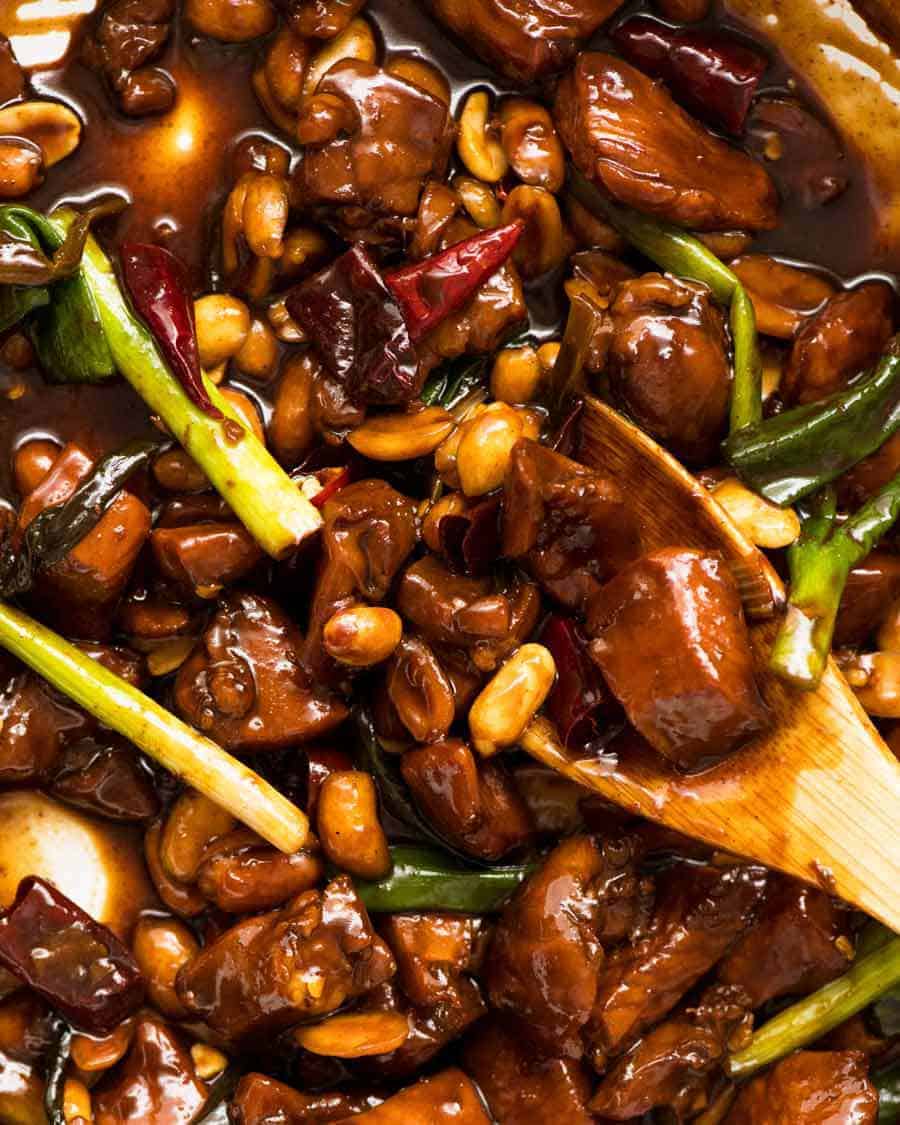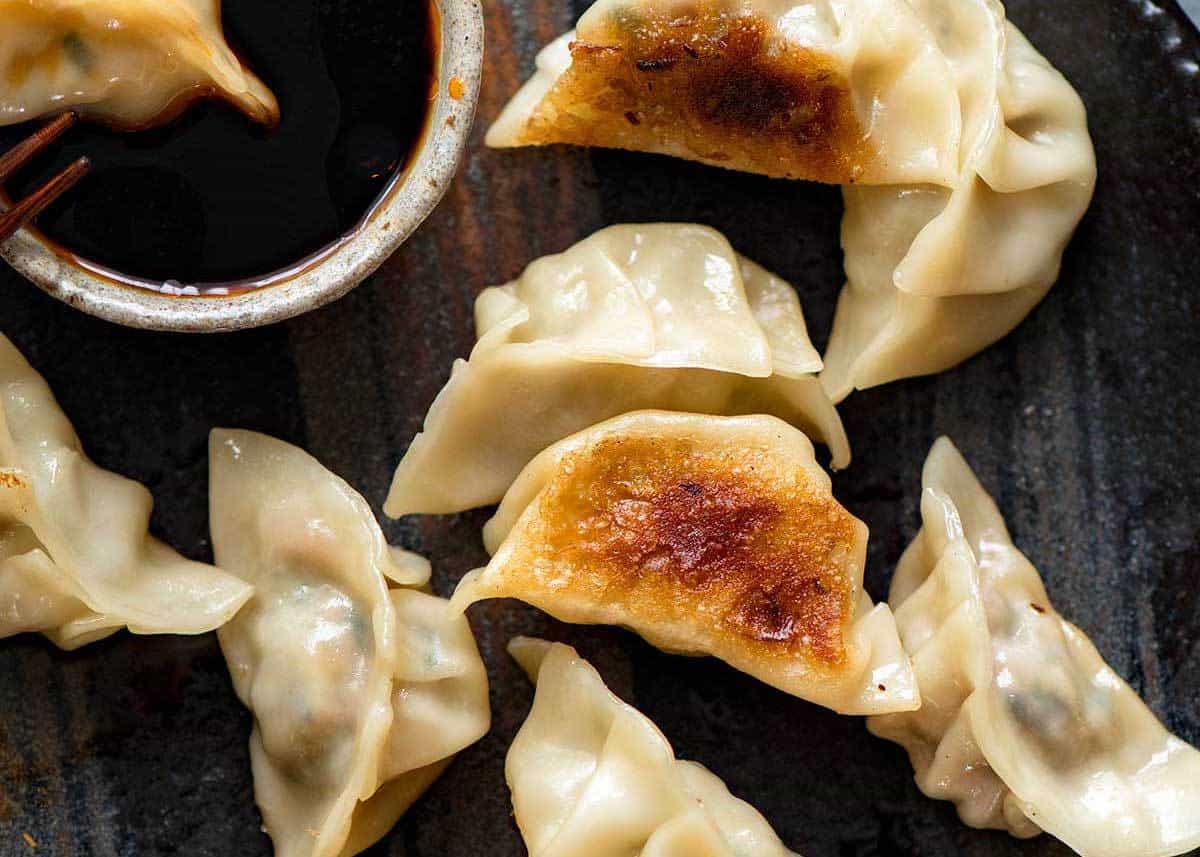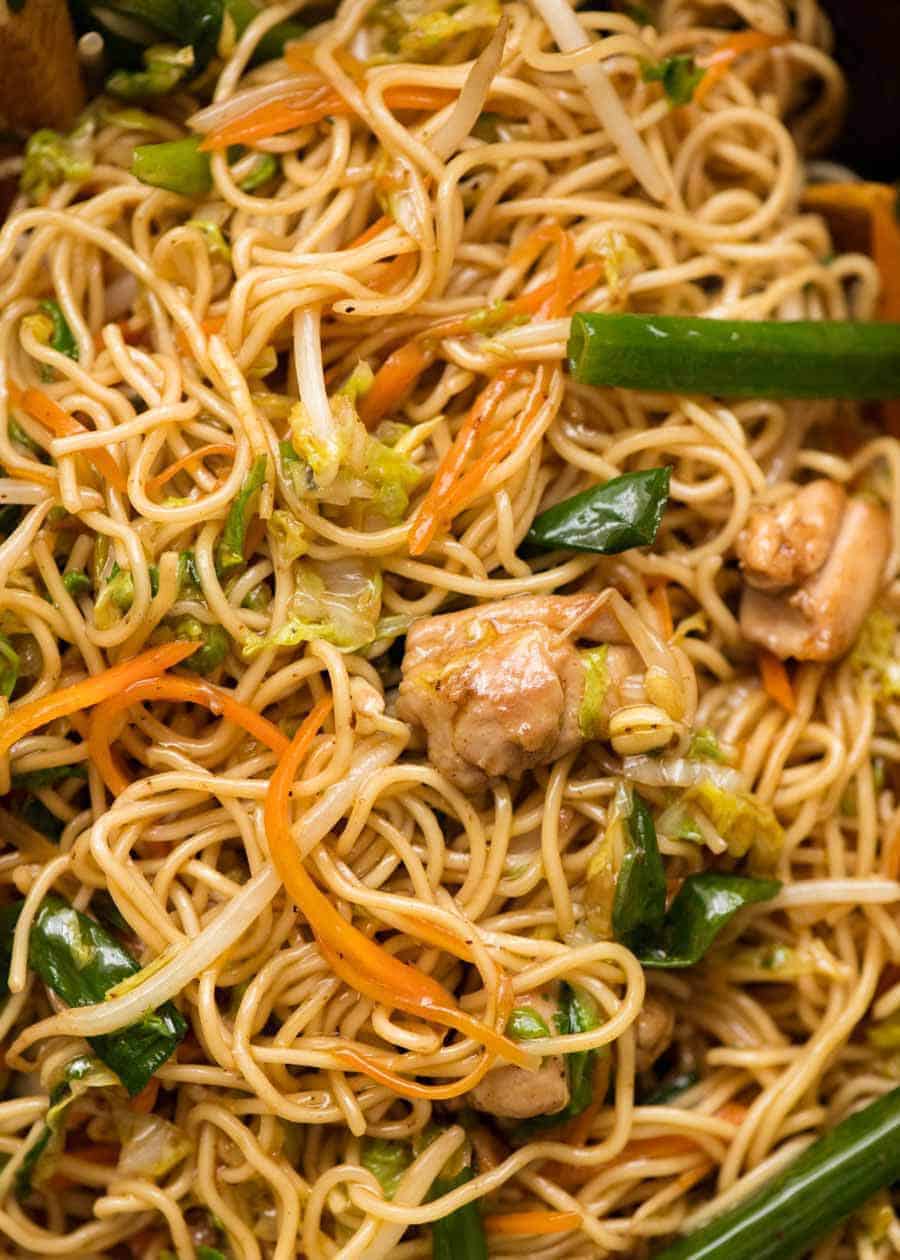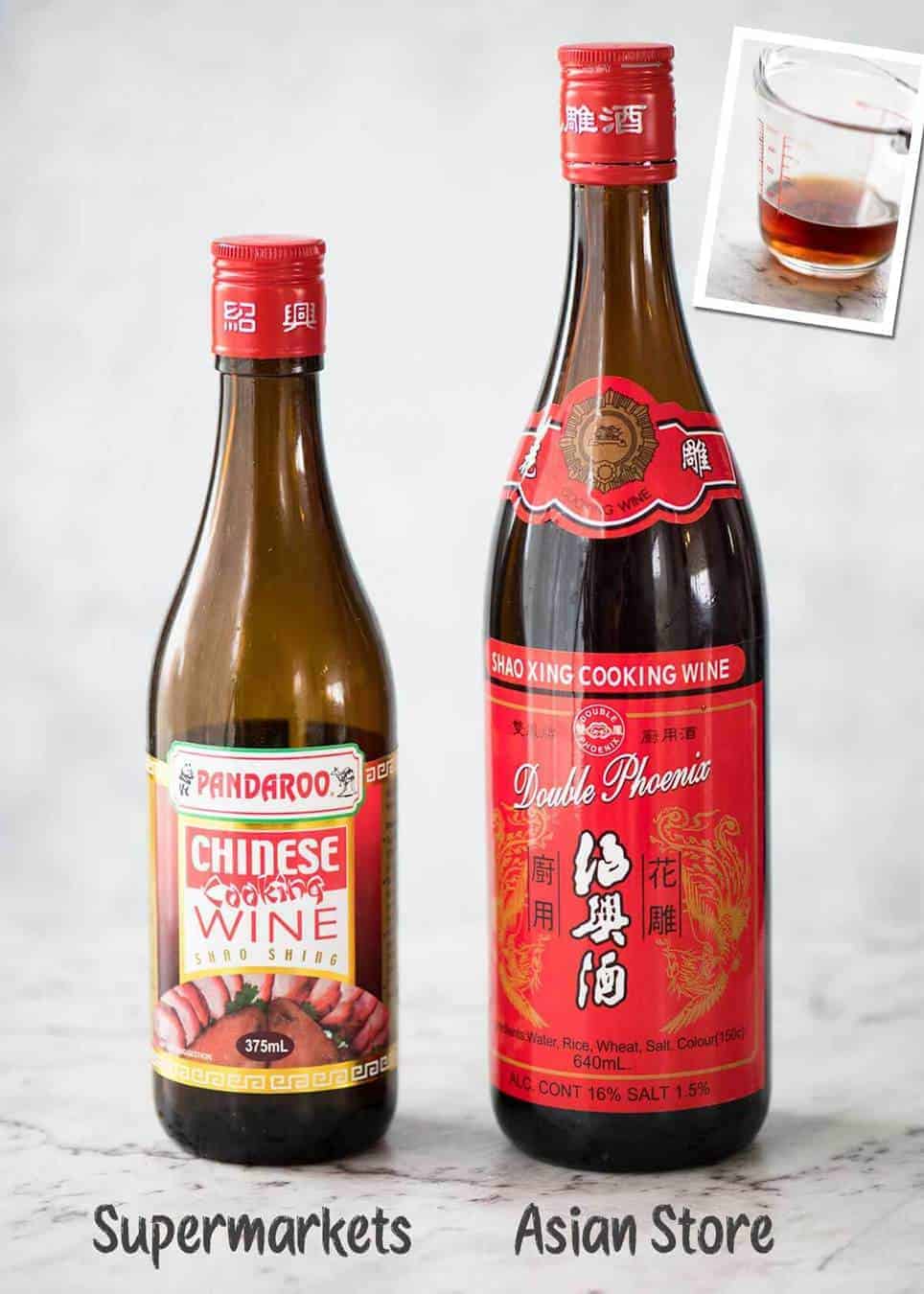Shaoxing Wine is used in practically every single Chinese recipe I’ve shared – because it’s key ingredient!
What is Shaoxing Wine?
Shaoxing wine is a type of Chinese cooking wine, and is alternatively spelt Shao-hsing or Shaohsing wine. It is made from rice and is one of the most popular types of of Chinese rice wines for cooking thanks to its complex and sweet flavour. It’s the default rice wine I use for Chinese cooking and so I refer to it simply as Chinese Cooking Wine in almost all my recipes. Remember Shaoxing wine is designed for cooking and not for drinking! Tasted by itself, it’s harshly alcoholic and a bit salty too, as salt is added to most formulations (my understanding is this is primarily for alcohol tax and regulation reasons). Along with soy sauce, it is probably one of the most important seasonings and cooking liquids for Chinese cooking. Just like in much European and Western cooking, it is used to add depth and complexity to sauces, broths and anything else it is added to. It’s usually used in small quantities – most stir fries only call for 1 or 2 tablespoons of Shaoxing Wine – and you can’t distinguish the taste of it in the finished dish. You just know it’s better! 🙂
Shaoxing Rice Wine
The best substitutes for Shaoxing Wine / Chinese Cooking Wine are as follows:
Dry sherry – that’s right, just every day cheap and cheerful dry sherry; Mirin – a Japanese sweet cooking wine. If you use this, omit or reduce sugar called for in the recipe because Mirin is much sweeter than Chinese Cooking Wine. If there’s no sugar to omit, that’s fine, just know that the sauce will be a bit sweeter; Cooking Sake / Japanese Rice Wine – this is a bit lighter in flavour than Chinese cooking wine, but is an acceptable substitute and the best substitute.
These wines bring a similar depth and complexity to sauces. Caveat: I understand that there are some people who can’t get or can’t consume alcohol, whether for health or religious reasons. But because Chinese cooking wine is such a key ingredient in Chinese sauces that cannot really be approximated by anything else, I cannot promise the same recipe outcome if it is made without using a wine. But for those who can consume alcohol, I really urge you to use one of the alcoholic substitutes above. You will thank me! 🙂 Pictured: Chop Suey / Chicken Stir Fry
What is Shaoxing rice wine used for?
Amongst all the familiar Chinese foods that we’re accustomed to in the West, you’d be hard pressed to find a single dish on a Chinese restaurant menu that does not use Chinese cooking wine! It is used in almost every stir fry sauce, from classic Chop Suey / Chicken Stir Fries (pictured above) to Cashew Chicken, Mongolian Beef to Beef and Broccoli, and Kung Pao Chicken. It’s also used in noodle recipes such as Chow Mein, and soup broths, like Wonton Soup and Chinese Corn Soup. And the fillings for dumplings, like Wontons and Potstickers. Pictured: Kung Pao Chicken and Potstickers
Secret ingredient
If you’ve ever made a Chinese recipe and wondered why it didn’t taste quite as good as what you get from your favourite Chinese restaurant, then Chinese Cooking Wine is probably the missing ingredient. You can get every other ingredient “right” in a stir fry sauce, but if you don’t use Chinese cooking wine, it will be missing that extra something-something that makes it truly taste restaurant quality. Or if it really looks tasty and you really want to try it anyway, add a splash of Chinese cooking wine and know you’ve just improved the recipe. 😉 Pictured: Chow Mein
Is Shaoxing wine safe for children to consume?
Chinese Cooking Wine usually has an alcohol content of between 15 – 20%. Because stir fries are cooked quickly, the alcohol content does not necessarily fully evaporate. However recipes only use a small amount of Chinese Cooking Wine – usually only 1 or 2 tablespoons for a stir fry that will serve between 3 to 4 people. Based on this, the amount of alcohol per serving is probably 1 or 2ml at most, which is a minuscule amount (one bottle of regular beer by comparison contains about 15 – 20ml of pure alcohol). And you certainly cannot taste it! If you are concerned about consuming a small amount of alcohol in food, then I would advise you to not eat any Chinese food from Chinese restaurants because Shaoxing Wine is such a key ingredient in Chinese cooking, it is used in almost everything. Certainly in all the take out favourites! In fact, I would advise you not to eat Chinese, Japanese, Korean or Thai food from any restaurant because all these cuisines use cooking rice wines in a similar manner. 🙂
Which Shaoxing wine brand I use
I use a brand called Double Phoenix (red bottle, above right) which I get from Asian grocery stores. It costs a whopping $2 per bottle and will make 40 or 50 stir fries. It’s very affordable! There are plenty of different brands at Asian stores and to be honest, I’m not furiously loyal to Double Phoenix, it is just the most common brand that I see. I’ve used others and not noticed a difference. Chinese Cooking Wine is also now sold in supermarkets here in Australia. A brand called Pandaroo (above left bottle) which is perfectly adequate – though more expensive than real Chinese brands!
How to store Shaoxing wine
Shaoxing wine does not need to be refrigerated once opened. Just keep it in your pantry – and it keeps for years! Check the expiry date on your bottle. Pictured: Egg Fried Rice
I hope that’s helped to answer some questions you might’ve had about Shaoxing Wine! You’ll find that I use Chinese cooking wine in virtually every Chinese recipe on my site. I’ve popped a list of some of the most popular ones below! – Nagi x
POPULAR RECIPES THAT USE SHAOXING WINE
Try these popular Chinese takeout recipes at home: CHICKEN
Cashew Chicken Kung Pao Chicken Chop Suey / Chicken Stir Fry
BEEF
Beef and Broccoli Crispy Sticky Mongolian Beef Beef Stir Fry
NOODLES
Chow Mein Singapore Noodles
DUMPLINGS & STARTERS
Wontons Potstickers Spring Rolls Chinese Lettuce Wraps Fried Rice
Browse all Asian Takeout Recipes

